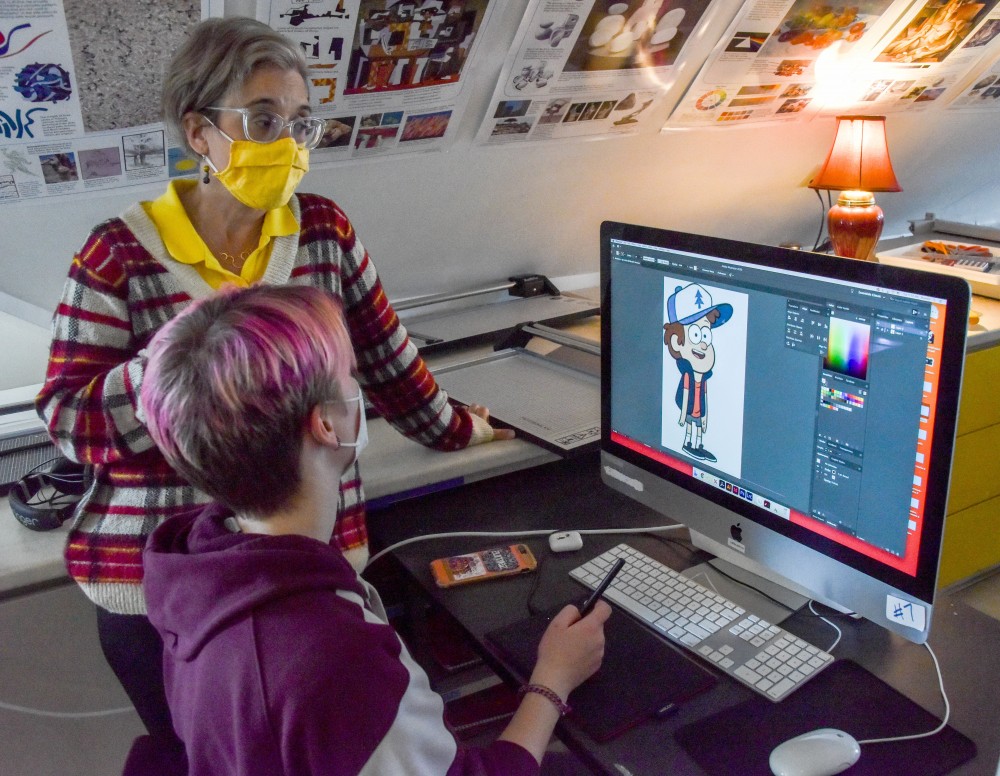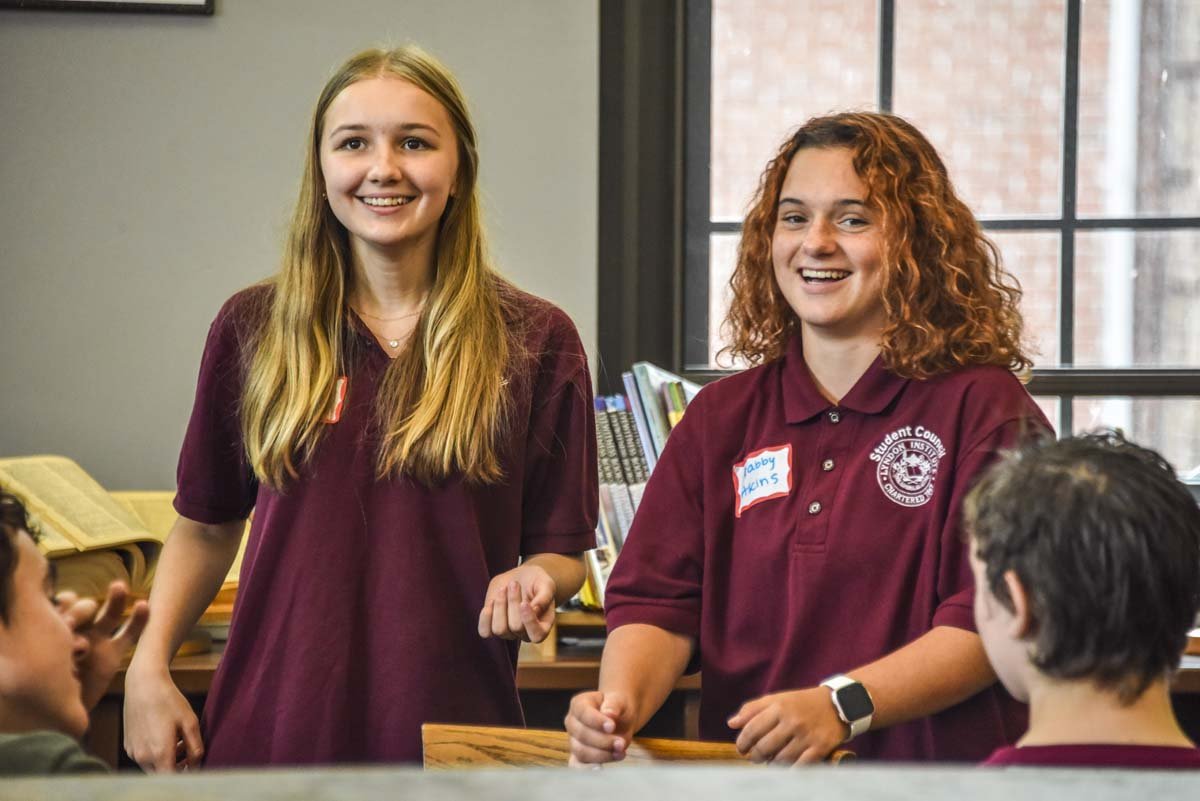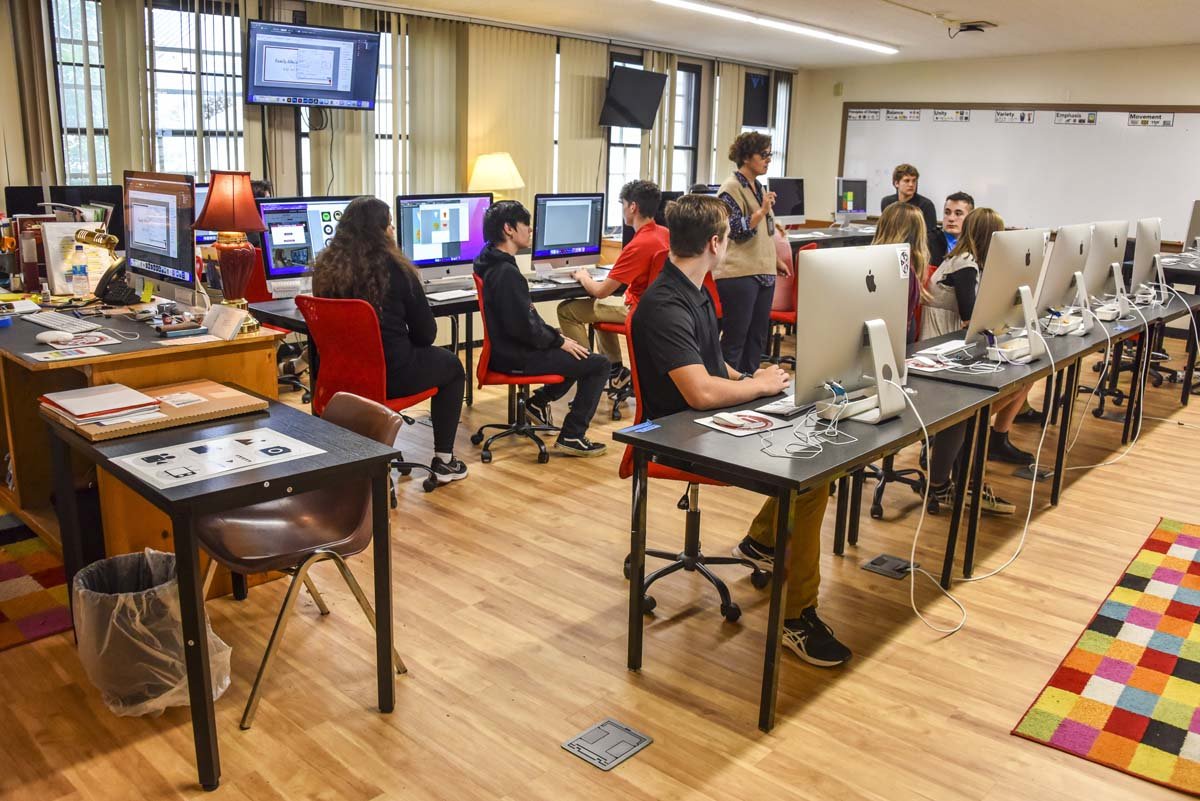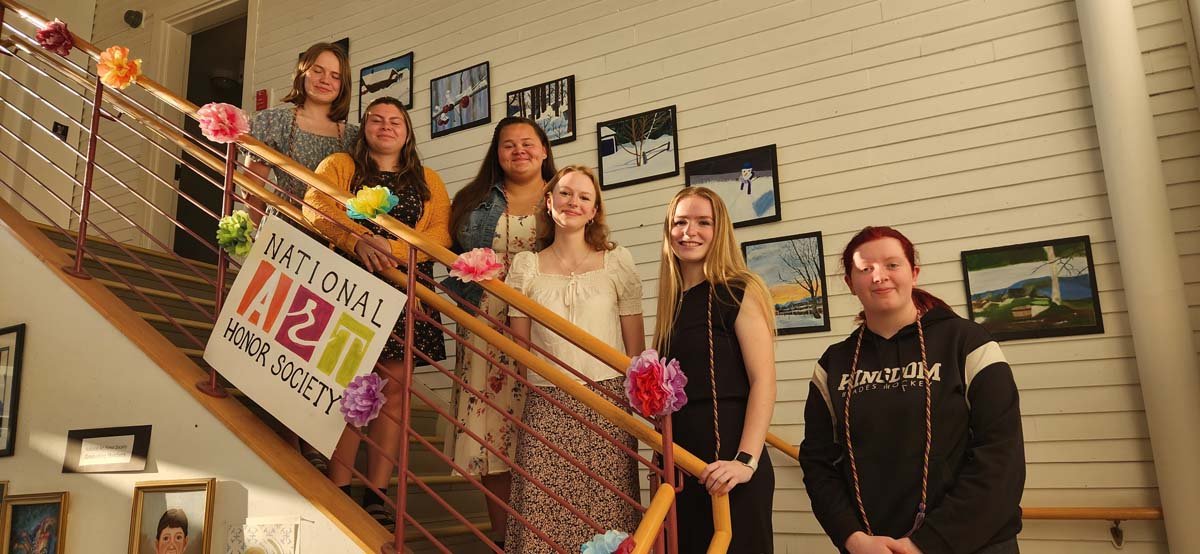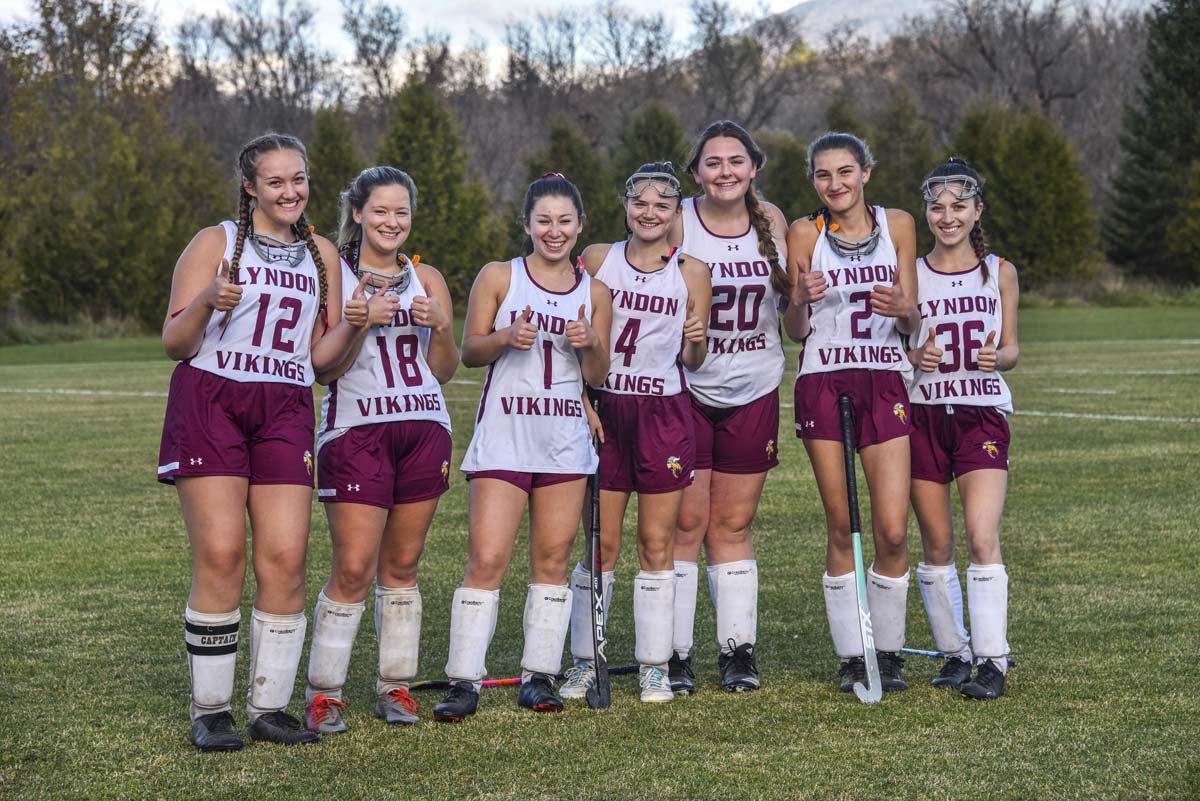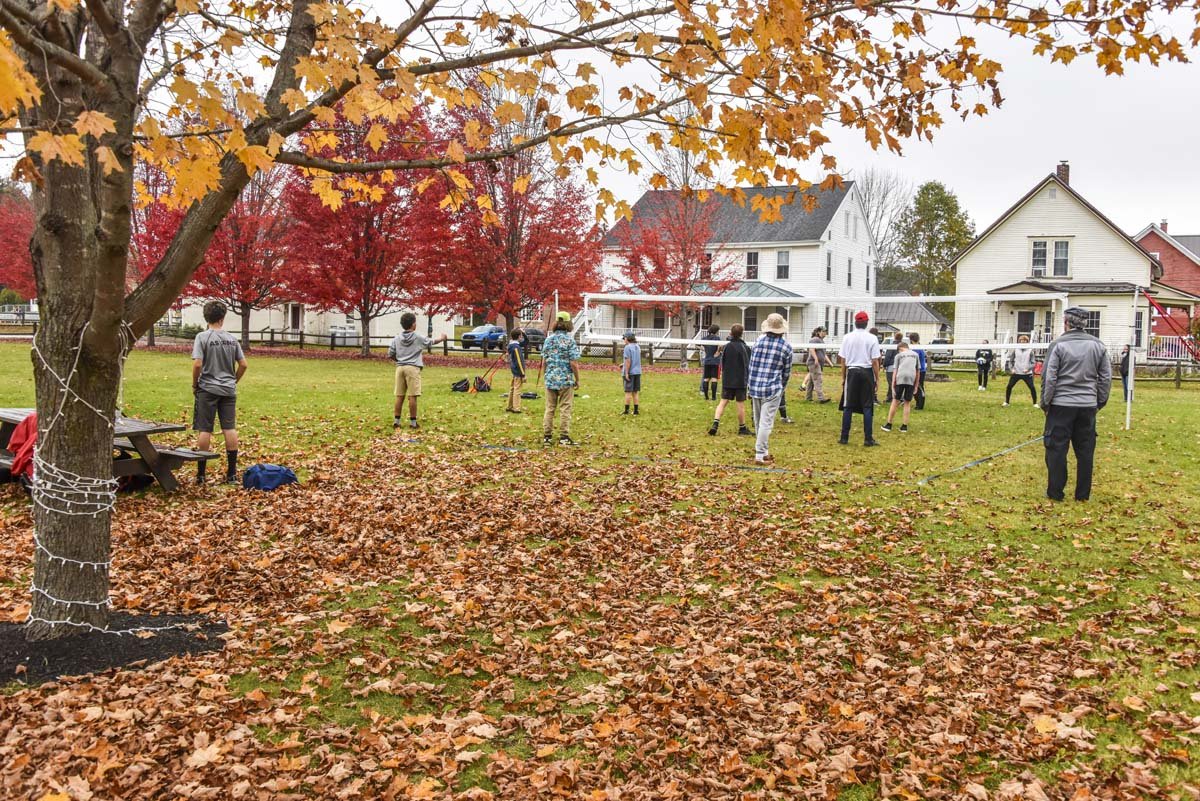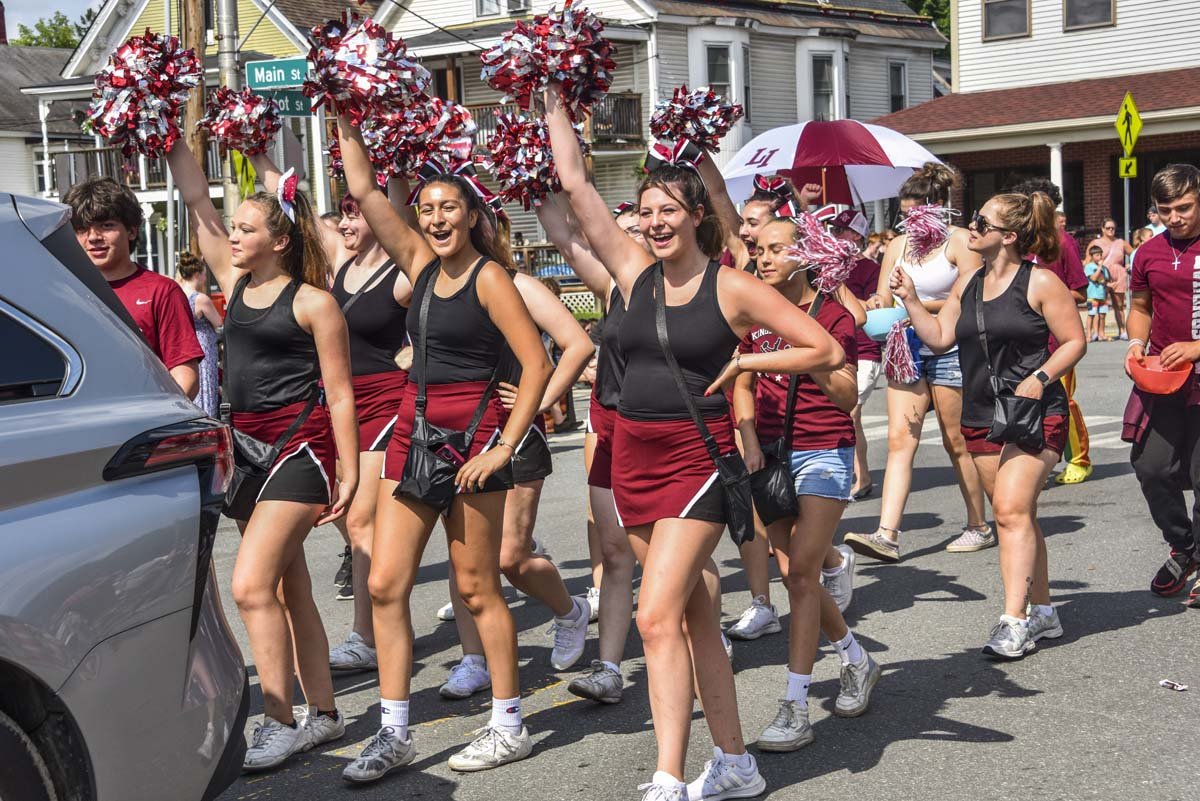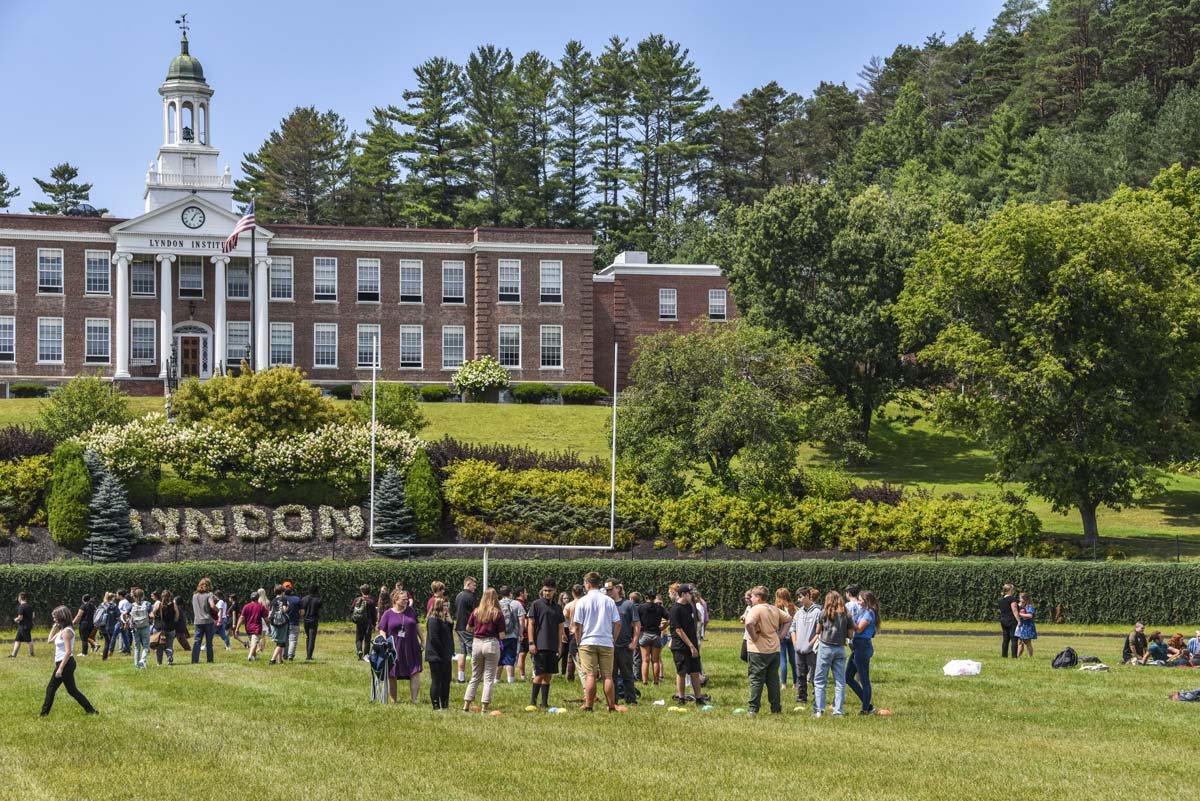- Our School
- Admissions
-
Academics
- Divisions and Faculty
- Commencement 2024
- January Term
- International Program (ESOL)
- College and Career Counseling
- Upward Bound
- Library/Monahan Academic Commons
- Career/Technical Education
- Lyndon Learning Collaborative
- Flexible Lyndon Institute Pathways (FLIP)
- Specialized Instruction
- Adult Continuing Education
- Lyndon Institute Course Catalog
- Student Services
- Arts
- Athletics
- Campus Life
- Support LI
- Alumni
« Back
Designing for the Future
November 16th, 2021
by David Stahler Jr.
Lyndon Institute’s Career and Technical Education Department isn’t just about being in the classroom, it’s about learning to succeed in a professional setting by providing as much real-world, project-based experience as possible. Nowhere is that seen more clearly than in the school’s Graphic Design Program.
In the late 90s, LI expanded its traditional visual arts offerings by hiring local artist Ellen Levitt, who was able to bring her talents as a professional designer into the classroom with courses in surface design, printmaking, and book arts. The opening of the Norris Center for the Arts on lower campus in the early 2000s brought the arrival of a new studio featuring a state-of-the-art Mac lab and new courses in digital design. In recent years, Bridget Atkins, Levitt’s successor, has expanded the program even further, providing students with an opportunity to learn what it’s like to work in a professional design studio.
Under the auspices of LI’s CTE Department, Atkins’s Graphic Design program offers a full slate of courses, including four levels of study with supplementary classes.
Students begin with Introduction to Graphic Design, an online class that develops foundational skills. Students learn about color theory, typography, and other basic principles of design. From there, students take Graphic Design 1 (Adobe Photoshop) followed by Graphic Design 2 (Adobe Illustrator), semester-long courses that offer a grounding in the software they’ll use regularly if they continue in the program.
These courses that make up the first half of the program provide students with useful skills that can be applied to all kinds of work—and play—and are open to any student looking to combine artistry and technology. But for those who wish to take their knowledge to the next level, particularly those who may be considering a career in graphic design, Atkins offers a more immersive experience with the second half of her program.
Graphic Design 3 and Graphic Design 4 are part of CTE’s “Half-day Program,” in which students spend two full blocks—half their school day—in the graphic design studio.
“The two courses are taught together at the same time and run a full year,” Atkins says. “Graphic Design 1 and 2 are taught in a more conventional style, with lectures, exercises, and activities, but by the time students reach Graphic Design 3 and 4, the atmosphere is very different. In many ways, the studio has the feel of a professional design firm, with students engrossed in their individual projects, collaborating with each other as needed. In this setting, I often serve more as a mentor than a traditional instructor.”
Combining Graphic Design 3 and 4 offers another opportunity. “My Graphic Design 4 students end up serving as teaching assistants, helping the level 3 students with their projects, just like they were helped the previous year.”
Through the first semester, Atkins complements their studio work with embedded study, including a range of targeted units that cover topics such as architectural and landscape design, web design, fashion and textile design, and book cover design, among others. “These units help introduce students to all the different kinds of career opportunities within the broader field. We also incorporate marketing design, including the importance of branding and effective logos.”
As the half-day program moves from first to second semester, work adopts an even more professional tone as the students begin taking on client projects, both from within the Lyndon Institute community—such as designing LI’s alumni magazine, The Viking Voice, for the Development office—and from businesses in the broader local community. “The idea is to get them comfortable with creating commercial grade products in as close to a real-life work setting as possible.”
For Atkins’s Graphic Design 4 students, the second semester is devoted not only to projects for business clients but also to portfolio completion for graduation, culminating in a formal presentation of work to a board composed of teachers, administrators, and peers.
Students who complete the program come away with marketable credentials, including Adobe certifications in Photoshop and Illustrator, and can also parlay their time in the program into college credit, giving them a leg up if they choose to continue their education at the post-secondary level. Lyndon Institute’s articulation agreement with Northern Vermont University allows students who enroll at NVU to transfer their Graphic Design Program coursework into four three-credit classes. Students also have the option of applying their two free Vermont State Dual Enrollment vouchers to turn their coursework into college credit, as well as two additional “Fast Forward” dual enrollment vouchers they receive through being part of the state-certified CTE program. Either route provides students with nearly a full semester’s worth of college credits.
But the benefits go beyond the tangible reward of academic credits. Reflecting on her time in the program, senior Hailey Lawrence says, “I have gained not only many skills from this program, but also a career. As soon as I started studying graphic arts, I knew that it was going to be an important part of my life. I plan on going to college for graphic design, utilizing the skills that I have learned, and plan on starting a graphic design career after art school. I want to focus on business design and marketing.”
“The thing I most enjoy about graphic arts,” she adds, “is I can have an idea in my mind, and then create it and watch what I had in mind unfold before my eyes.”
Opportunities for learning and applied experience aren’t limited to the program’s courses, however. Atkins also supervises the Lyndon Institute Design Studio (LIDS), which doubles as the school’s Future Business Leaders of America (FBLA) program and is endorsed by the national FBLA program.
While virtually all the Graphic Design Program students are members, the club is open to any student who wishes to join. Every year, the club tackles two design pieces as a group—one in the fall, another in the spring. In the process of completing their design pieces, members work through all the stages of a project, from meeting with the clients multiple times during the production stage in order to develop a strong working relationship to invoicing at the project’s completion and learning how to bill for production costs. In addition to the semester design pieces, LIDS also picks a major, full-year project to work on. This year, the club is designing and producing Cynosure, the school’s yearbook.
As for the FBLA side of the club, students attend competitions—like SkillsUSA, where members compete in graphic design, publication design, T-shirt design, and pin design—as well as conferences geared toward cultivating business and professional skills, such as the FBLA Fall Leadership Conference and the State Leadership Conference. Members also have the opportunity to attend National Portfolio Day in Boston to attend art critique sessions of their portfolio from professional designers and in some cases be accepted on the spot to their dream college.
“FBLA gives students the skill set they need in order to succeed in numerous job opportunities,” says senior Tori Young. “That’s probably my favorite part about FBLA—how the skills you learn can be utilized just about anywhere you decide to go. As a senior who still isn’t quite sure what their plan for the future is yet, it’s reassuring to be able to take a set of business and leadership skills and be able to apply them anywhere, no matter what career path I choose.”
Young is not only the president of LI’s local chapter, she was also recently selected to serve as president of Vermont’s state FBLA chapter. “While FBLA provides us with the skills we need to succeed,” she goes on to add, “what makes LIDS so unique is applying those skills to an actual job setting. Whether we are helping with a school-sponsored activity such as the Cynosure or working on a community project like designing logos for local businesses, we are able to gain firsthand knowledge of what it’s like working as a graphic designer.”
The anchor for both the Graphic Design Program and the clubs that support it is instructor Bridget Atkins. Atkins is a relative newcomer to the world of education, having begun her teaching career when she came to LI in 2014. Prior to becoming a classroom instructor, Atkins spent many years working in public relations in the Littleton, NH area, both for non-profit organizations (Littleton Area Chamber of Commerce, Littleton Regional Hospital) and private companies (Garnet Hill, Tender Corporation), as well as operating her own marketing and design firm. Along the way, Atkins began developing a career as a freelance graphic designer, working for a variety of clients, including Catamount Arts in St. Johnsbury, and earning a second college degree, a BA in Visual Communication from Lyndon State College, she then continued her education, receiving an endorsement in teaching from Vermont Technical College in July 2020. Atkins is currently enrolled in the Adapted Certificate in Online Learning through Castleton University.
So what led her from public relations to graphic design? “I got the ‘bug’ for graphic design working for the Daily Camera Newspaper, a Knight-Ridder Publication in Boulder, Colorado,” she says. “This was my first ‘grown-up job’ straight out of college (for $6.50 an hour), and I was responsible for assisting advertising representatives who sold ads in the newspaper. Back then, an ad rep would have to build the ad themselves, such as gathering the customer logo, the copy, and images they wanted all in paper form. My job was to lay it out and then send it upstairs to the pre-media department (with only two computers in the whole newspaper) to design and place the ad in the paper. I loved watching the process and how it happened, and this is actually what drove me to learn on my own the world of graphic design.”
As for teaching? “I chose to teach because I always knew I was destined for greater things, greater purposes; I related to kids, and they related to me. I taught Sunday school for several years—6th grade to high school level—and knew this was a path I wanted to take. I teach not for the money but for the impact I make every day on a student's life. I had a guidance counselor who believed in me in high school. Without him I would have never gotten to where I am today, and my life would be very different. I honor that person every day when I teach at LI. His impact on me is the kind I want to pass on to my students.”
Atkins may have come to the teaching profession later in life, but she’s embraced the role whole-heartedly while drawing upon her years of experience in the world of business and graphic design to offer her students a rare opportunity to learn first-hand what that environment is like and how to succeed in it. At their best, CTE programs give students a grounding through real-world applications of their skills in a professional setting. Students who choose to enroll in Atkins’s Graphic Design Program regularly get to see the fruits of their work on display both in the LI community and beyond.
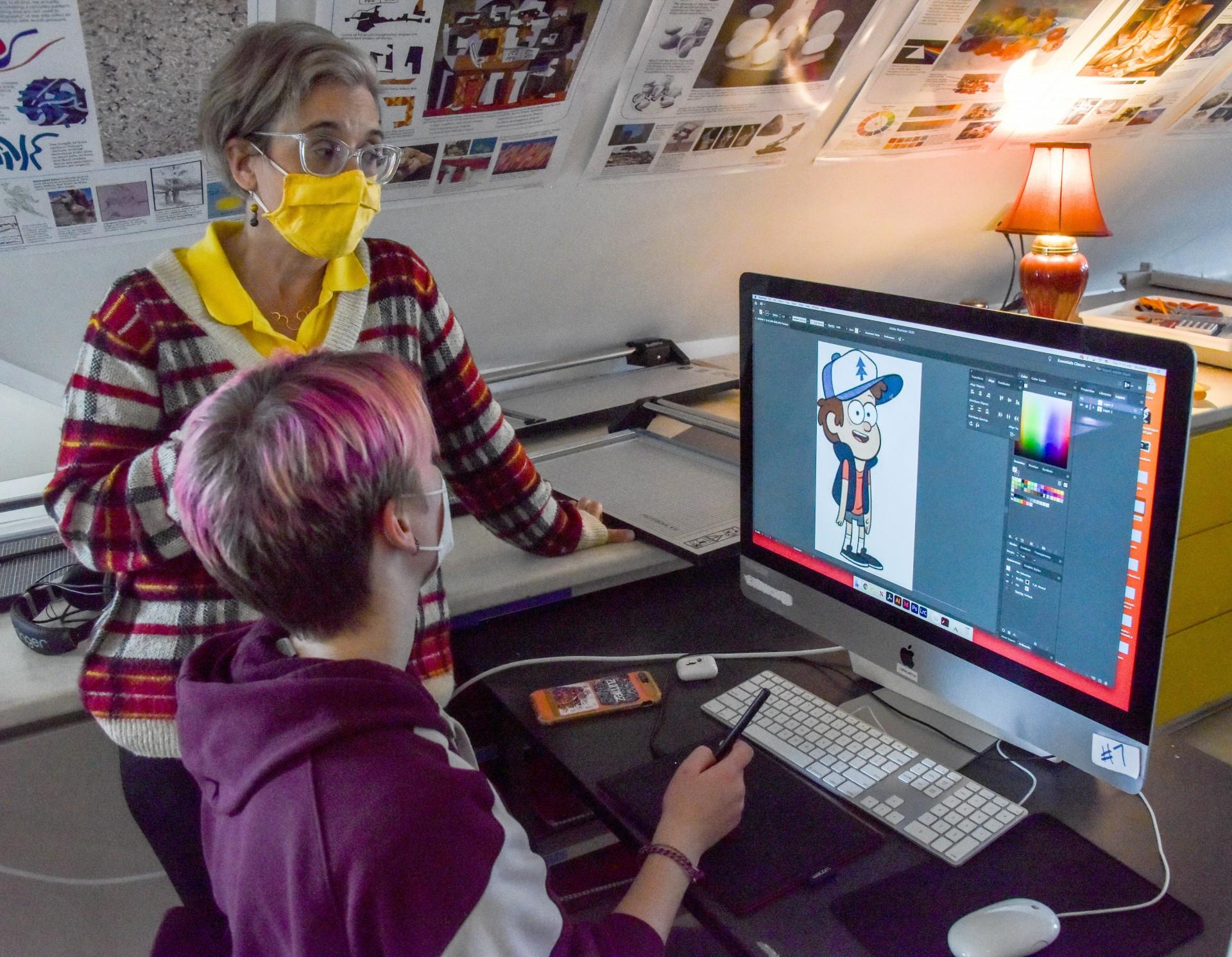
Caption: Lyndon Institute graphic design instructor Bridget Atkins (standing) discusses a project with student Lunamay Waterman (seated) in the spring of 2021.
Posted in the category Front Page.

